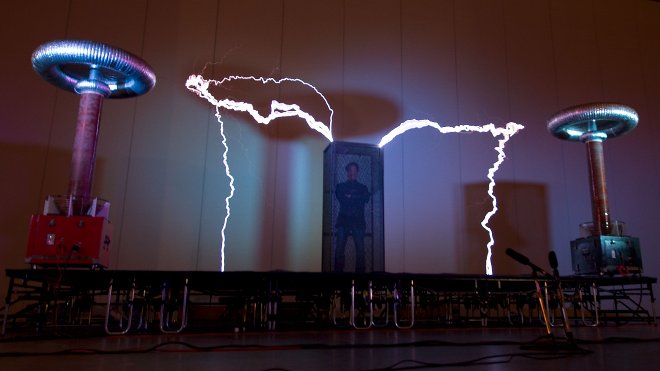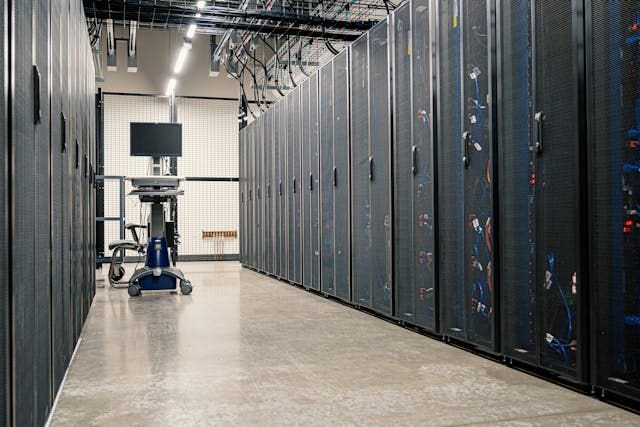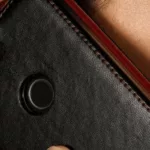Faraday cages, unlike other scientific instruments, are everywhere around us. Even if you haven’t heard much about them, you’ve used them numerous times in your life. In fact, you probably even own one.
So, what exactly is a Faraday cageA Faraday cage, named after the English scientist Michael Faraday who invented them in 1836, is a structure used to shield its contents from external electric fields, including electromagnetic fields... More, and why is it so important? And what’s the relationship between a Faraday cage and EMF safety?
With September 22 marking EMF Radiation Safety Day, I wanted to answer these questions because there’s a lot we can learn from Michael FaradayMichael Faraday: Pioneer of Electromagnetism and the Faraday Cage Michael Faraday, born on September 22, 1791, in Newington Butts, Surrey, England, was a brilliant scientist and experimentalist who made groundbreaking... More and how his groundbreaking invention helps to keep us safe in our everyday lives.
Table of Contents
ToggleSeptember 22: EMF Radiation Safety Day
Before exploring the Faraday cage in-depth, let’s first talk about “EMF Radiation"Radiation" in the context of Electromagnetic Fields (EMF) refers to the process by which energy is emitted and transmitted through space or a material medium in the form of electromagnetic... More Safety Day,” since I mentioned it in the introduction, and I’m sure you’re wondering what it’s all about.
Imagine life with no smartphones, tablets, GPS, BluetoothFrom the perspective of someone concerned about the health effects of electromagnetic radiation, understanding Bluetooth radiation is crucial, especially in our increasingly wireless world. Bluetooth technology, ubiquitous in our daily... More, or our beloved social media sites like Facebook and Twitter. Sounds harsh, doesn’t it? But that was the reality just twenty years ago.

Want to Slash Your EMF Health Risks?
Good! Learn the one small change you should make right now.
Modern technology advanced extremely quickly. Today our gadgets are doing things that were deemed impossible not that long ago. Our lives today are so much easier, thanks to these brilliant innovations.
But, there’s a downside to this. The growth in technology has caused the EMF pollution in our environment to grow even denser. And we’re now being exposed to more electromagnetic fields (EMF) than ever before.
Electronic gadgets like cell phones, laptops, tablets, Bluetooth devices, and WiFi routers, which we use every day, emit massive amounts of electromagnetic radiationElectromagnetic radiation refers to the waves of the electromagnetic field, propagating through space, carrying electromagnetic radiant energy. It includes a wide range of electromagnetic waves, from very long radio waves... More.
Also, with the installation of 5G infrastructure being almost complete, we’re on the verge of 5G"5G" refers to the fifth generation of wireless communication technology, a step up from the previous 4G, 3G, and 2G networks. It's designed to provide faster internet speeds, more reliable... More being our new standard network. And since it will operate on frequencies nearly ten times higher than 4G, it’s a no-brainer that the general population’s EMF exposure is set to increase exponentially, once more.
These exposure levels are a concern. Why? Because there’s an already large and ever-growing body of research showing that EMF is harmful to human health.
That’s why there’s strong opposition to 5G. That’s why more needs to be done to test and regulate new technologies.
That’s why we need to raise awareness about EMF safety.
EMF Radiation Safety Day will take place on September 22 because English scientist Michael Faraday was born on that day in 1791.
And Faraday not only invented electromagnetic induction, but he also invented the technology that would make shielding against electromagnetic radiation possible: the Faraday cage.
The Finding
It all started in 1755 when Benjamin Franklin, one of the United States’ founding fathers, experimented to understand electricity better. His hypothesis was simple: If you bring a dielectric cork (which is attracted to electricity) near an electrically charged metal can, the walls of the can will attract the cork.
For this experiment, he attached a silk thread to the dielectric cork and lowered it inside a metal can. He then electrified the can from the outside to see if the walls attract the cork. But to his surprise, the inside of the can didn’t attract the cork. He then again took out the cork and brought it near the outside walls of the electrically charged can, and it drew the cork towards it.
Franklin never managed to understand why the inside of his metal can didn’t attract the cork. His letter to a colleague said, “You require the reason; I do not know it. Perhaps you may discover it, and then you will be so good as to communicate it to me.”
The result remained a mystery for a long time until eighty-one years later, when an English scientist named Michael Faraday performed an experiment similar to Franklin’s. But the subject of Faraday’s experiment wasn’t a cork ball. It was himself.
Before this experiment, Faraday used to work in a cramped basement lab in the west end of London. But the space he had wasn’t enough for his experiment. So, he left his workspace and came to the Royal Institution of Great Britain and set his lab up in the lecture theater.
He then built a 12ft wooden frame with four glass supports and covered the frame with paper walls and metal wire mesh. Once he completed the frame, he then stepped inside it and electrified it from the outside.

Faraday spent two whole days inside the cage, unaffected, with electrometers, candles, and a large brass ball to prove his hypothesis. His discovery completely changed how scientists viewed electricity. And even today, it holds an important place in the design of modern electronic and electrical products.
The Invention: Faraday cage
A Faraday cage, also known as a Faraday shield, is an enclosure that blocks electric fieldsDefinition and Nature of Electric Fields Electric fields are a fundamental aspect of electromagnetic fields, created by electric charges, either stationary or moving. These fields represent the force that electric... More. The cage must be made from a material that conducts electricity – for example, a fine metal mesh.
It works like this: When an electric charge or waveThe term "wave" in the context of Electromagnetic Fields (EMF), frequency, and energy is a fundamental concept in physics and essential in understanding various natural phenomena and technological applications. A... More of electromagnetic radiation hits the cage, it gets distributed around the cage’s exterior. This cancels out electric charges or radiation in the cage’s interior, thus protecting whatever is inside.
Another simplified way to describe the Faraday cage is as a type of hollow conductorThe term "conductor," in the context of electromagnetic radiation, refers to materials or substances that allow for the efficient passage of electromagnetic energy, including both electric currents and electromagnetic fields.... More. When the conductor is charged, the charge stays only on the surface.
Faraday cages don’t block everything. The earth’s magnetic fieldIn the context of electromagnetic fields (EMF), the term "field" refers to a region in space where electric and magnetic forces are exerted. An electromagnetic field is generated by electrically... More, for example, penetrates. Some radio frequencyRadio Frequency (or RF), a subset of EMF, encompasses electromagnetic wave frequencies ranging from about 3 kilohertz (kHz) to 300 gigahertz (GHz). These frequencies are extensively used in modern wireless... More waves might pass through the cage depending on factors like distance and frequency"Frequency" in the context of electricity, Electromagnetic Fields (EMF), and wireless communication, can be thought of as the number of times something happens in a second. Specifically, it refers to... More of the signal.
Still, the Faraday cage is a potent tool with many applications in modern life — some that people are hardly even aware of.
Why Do We Want to Shield EMF Radiation?
There are two aspects to it: the health aspect, especially in the modern days, and the shielding of sensitive inanimate objects. Have a look.
Shielding EMF to Protect Health
Our exposure to human-made EMF began with the light-bulb’s invention and the electrical structure to support it in the late 1800s. But, the volume of EMF it emitted wasn’t so huge that it could massively deteriorate public health. In fact, that was the case until circa 1990.
And then came 2G – a kind of network infrastructure that could support wireless communication and text messaging. It was a massive leap for humanity; however, it also marked the beginning of humans’ exposure to significantly higher EMF emissions. And since the cell phones that used 2G became mobile, we came in close proximity to a heavy EMF source. After 2G, the tech world kept advancing and adding new EMF sources to the list, making the EMF pollution in our environment dense and ever-growing.

The wireless industry has undoubtedly made our lives much easier, but we’re also paying a huge price for this convenience — and I’m not talking about money. Thousands of research studies say that exposure to EMF from wireless gadgets and network sources results in a number of physical and mental health problems.
This is why protection from EMF is a must in our modern world.
Shielding EMF to Protect Equipment
Do you know why you have to switch off your phone or turn it on airplane mode when you’re traveling via air?
It’s because your cell phone emits a huge amount of EMF, which can interfere with the radio communication between pilots and air traffic control.
EMFs from different sources tend to get mixed up, which causes interference, resulting in a low-quality network service. And that can result in a life-threatening situation, especially when you’re flying.
Switching off your phone works great for reducing interference with airplanes’ comms systems, but it doesn’t work everywhere. Take data centers, for example.
These centers pack numerous storage devices, UPS systems, and power"Power" in a scientific context refers to the rate at which work is done or energy is transferred. In simpler terms, it's how fast something is using energy. For example,... More lines, which is why there’s a huge chance of unintended EMF interference failing the system. And you can’t afford for it to fail because every second, millions of GBs of data run in and out of these facilities. So, to prevent this kind of failure from EMF interference, engineers install a Faraday cage to keep these storage systems in isolation.

Faraday cages also keep the storage devices in these data centers out of intruders’ reach. Wireless EMF has a massive range, and with the right tools and knowledge, hackers can get into sensitive systems and steal critical data. If there’s EMF shieldingEMF shielding refers to the practice of reducing the electromagnetic field (EMF) exposure in a particular area by blocking or altering the electromagnetic waves with barriers made of conductive or... More, there’s no way for them to access those systems unless they’re physically accessing the machine.
Faraday cages in Your Everyday Life
It may come as a surprise, but you’ve interacted with Faraday cages many times in your life. You’ve sat in an airplane; that’s a Faraday cage. You’ve used a microwave oven; that’s also a Faraday cage.
In fact, we have so many things around us that are built on the principles of this 200-year-old experiment by Michael Faraday. Let’s take a closer look at a few of those things.
Airplanes
What would happen if you were flying in a plane and it suddenly got struck by lightning?
You might not know it, but this happens regularly. The reason you don’t fall from the sky in a fiery ball is that the plane is essentially a Faraday cage. The lightning charge runs around the vessel’s exterior, and you’re left to watch your movie in peace.
MRI Scanning Rooms
External radio frequency signals can cloud the data collected by MRI machines. That’s why these important medical devices are housed inside Faraday cage-like rooms.
Microwave Ovens
You know that mesh on the inside of your microwave door? You guessed it: Faraday cage. In this case, the cage works in reverse, so the microwave radiationMicrowave radiation is a form of electromagnetic radiation with wavelengths ranging from one meter to one millimeter; with frequencies between 300 MHz (0.3 GHz) and 300 GHz. This type of... More cooks just what’s on the inside.
Military Uses
Room-sized Faraday cages can be used when sensitive information needs to be shared because eavesdropping devices can’t penetrate. The military also uses them to protect electronics from disruptive electromagnetic pulses (EMPs).
Protective Suits
When might you need a heavy-duty metal-lined protective suit? Not very often, but most certainly when you’re a lineman working on high-voltage power lines.
Personal EMF Protection
The Faraday cage is also the basis of all SYB’s personal EMF-shielding products. Technology has advanced to allow conductive materials to be super fine and lightweight. We’ve designed ways to interweave these materials into everyday fabrics so you can be protected from harmful EMF rays from cell phones and other sources — even as you go about your daily life.
The metallic fibers in our Baby Blanket, for example, are thinner than a human hair. And our SYB Phone Pouch is like a cell phone Faraday cage, deflecting 99.9% of wireless radiationDefinition and Characteristics Wireless radiation refers to the electromagnetic radiation emitted by wireless devices and technologies. It encompasses a range of frequencies within the electromagnetic spectrum, typically from 300 MHz... More away from your body.
That’s what we mean when we talk about EMF protection products. When Faraday succeeded in his experiment, it hardly screamed applications. But his contributions are the only reason we can create solutions that help people live safer, healthier lives alongside technology and the EMF it generates.
Why The Faraday Cage Is More Relevant Now Than Ever
Using EMF protection to deflect harmful radio frequency waves is not a perfect solution. That’s why we always say that the best thing you can do is follow two rules: minimize your use of EMF-emitting devices and maximize your distance from them when you do have to use them.
To put it another way, the best EMF protection is free.
But in a technology-driven world, following these rules isn’t always possible. That’s a simple reality. We carry smartphones with us. We have wifi routers in our houses. We’re given smart meters against our wishes.
And 5G mini cell receptors are going to be making EMF ever more present.
It’s because of these reasons that EMF safety awareness is more important now than ever.
When we look at the problems faced by Michael Faraday in the 19th century, they’re not so different to ours today. Scientific paradigms are stubborn. Faraday worked for years on end to change accepted beliefs around the interactions between electricity, magnetism, and light.
Despite ample research, beliefs around the safety of electromagnetic fields are similarly conflicted, deep-rooted, and rigid.
This time our health is at stake. In celebration of Faraday and his revolutionary invention, let’s do what we can to raise awareness of EMF safety this September 22.









